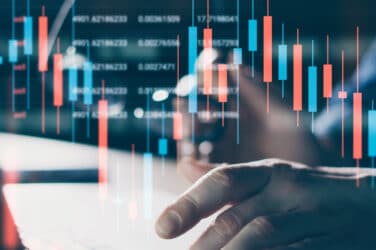
 
Retail trades are smaller than institutional trades, but there are many more self-directed investors than there are trading and investment firms. And while people in pajamas on their kitchen-table laptops aren’t always in the market, when they are, trades can come in torrents.
So retail broker-dealers need infrastructure that can handle the volume spikes that might come at the open or close of a trading day, or around corporate earnings announcements, macroeconomic news, or geopolitical events.
 “We have a very diverse client base, which necessitates having an order management system that accommodates primarily a high-throughput, low-touch model,” said Matt Billings, senior vice president of trading services at St. Louis-based Scottrade. “The key is throughput – orderly management of flow seamlessly and efficiently through our OMS and into the marketplace.”
“We have a very diverse client base, which necessitates having an order management system that accommodates primarily a high-throughput, low-touch model,” said Matt Billings, senior vice president of trading services at St. Louis-based Scottrade. “The key is throughput – orderly management of flow seamlessly and efficiently through our OMS and into the marketplace.”
Billings, who oversees the routing and execution of Scottrade’s equity and options trades, noted the firm’s vendor-provided OMS is supplemented by multiple internally built applications that manage and monitor order flow. The raison d’être of the technology is to provide best execution for clients.
“We strive to continually improve the client execution experience — it needs to be a quality, consistent experience,” Billings told Markets Media. “We’re continually assessing execution partners…We need an OMS that is very configurable, that can allow us to dynamically route order flow accordingly when we recognize that we want to make some changes in our order routing. Configurability and dynamic order routing capabilities are imperative.”
Some retail broker-dealers — who receive orders from the financial advisor or the end user of an online brokerage, to be routed to an exchange — are hamstrung by dated technology, according to Adam Levy, vice president of business development and product marketing at trading-technology provider Fidessa.
“We are replacing legacy systems that struggle to load balance at key times of the trading day and offer limited routing logic with a managed hosted solution that will stay current with a regular upgrade cycle,” Levy said.
Levy likened the OMS to a catcher’s mitt, as it backstops the trade once the order is validated by the broker’s internal system. “Central to the OMS is a highly performant and resilient infrastructure, sophisticated order routing table with access to wholesalers, exchanges and algos, and full suite of compliance.”
Risk mitigation is an area of concern for retail broker-dealers. This can be addressed via scalability and versatility, as well as real-time monitoring of trading venues, enhanced analytics and other empowerment tools, and multiple Financial Information Exchange (FIX) lines, according to Levy.
Another retail concern is how to handle trades of complex listed equity options, international securities, and other more exotic trades just as efficiently as plain-vanilla U.S. equity and single-stock option trades. “Multi-asset is a focus,” Levy said. “A lot of these older home-grown systems were built for a different market and not the more sophisticated order types.”
Billings has seen a massive evolution in trading technology over his 26 years in the business. When he started as a floor broker in Chicago in 1990, a trader could grab a cup of coffee — and maybe visit the restroom — between order and execution. “In days past, we would talk not in seconds, but in minutes to execute orders. Now we’re talking milliseconds and microseconds,” he said.
And technological advances will continue. “We need to stay on top of it to make sure that we’re fulfilling our commitment to improve the client execution experience,” Billings said.
“From Scottrade, there’s all sorts of different ways to enter an order, from our mobile platforms to our online platforms, as well as our branches and service centers,” Billings added. “The key there, regardless of where it comes from, is that it has to get to the marketplace quickly and effectively.”






